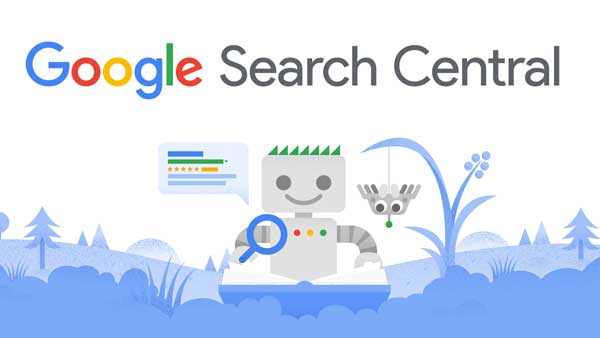Welcome to this comprehensive guide where we delve into the insights provided by Google’s SEO Office Hours. In these sessions, experts from Google’s Search Quality team address a wide array of questions concerning SEO and Google Search. This article highlights the key takeaways and actionable advice shared during the session.

Sitemap Index Files: Best Practices for Organizing URLs
One question that often arises is the number of URLs a sitemap index file can contain. As the transcript reveals, both XML sitemap files and sitemap index files can hold up to 50,000 URLs. This practice ensures effective indexing and accessibility for search engines. If you’re interested in learning more, Google’s sitemap documentation provides comprehensive information.
ARIA Attributes and Accessibility in SEO
A question was raised regarding the impact of ARIA label attributes on SEO. The response emphasizes that while there isn’t a direct SEO advantage to using accessibility features for SEO, these attributes play a crucial role in making websites accessible for users with disabilities. Properly implementing ARIA labels enhances the user experience and can indirectly influence SEO through improved user engagement.
Canonicalization: Consistency and Its Role
The discussion moves to canonicalization and its impact on SEO. While there might not be a direct SEO advantage, consistency in canonicalization and internal linking can lead to more streamlined tracking and improved user experience. By setting a preferred version of a page as x-default in Hreflang, you ensure consistency and simplify the process for both search engines and users.
URL Fragments: Relevance and Usage
The topic of URL fragments and their impact on search results is covered. In most cases, URL fragments (also known as hashtags) are used to link to specific content within a page. While Google Search considers the entire page, fragments are usually ignored. However, they can serve as handy navigation tools for users to jump directly to relevant sections of a page.
Comprehensive SEO Strategy Beyond Technical Aspects
A common concern is why a site isn’t ranking despite proper SEO practices. The answer goes beyond technical optimization. Comparing it to the offline world, technical details are akin to a book’s cover or a restaurant’s kitchen cleanliness. However, success also hinges on the quality and appeal of the content, user experience, and overall strategy.
Manual Actions and Site Penalties
A user inquires about identifying penalties for a newly acquired website. Google Search Console provides visibility into manual actions, helping website owners track and address any issues. Resolving manual actions effectively eliminates their negative impact. Additionally, Google’s algorithms can respond to quality issues without manual actions, reinforcing the importance of maintaining high-quality content.
Structured Data and Rich Snippets
The question arises whether real estate properties can use product rich snippets. It’s clarified that using product structure data for real estate isn’t abusive, but it doesn’t yield any SEO benefits either. It’s advisable to utilize structured data for elements that can be effectively displayed as products in search results.
Hreflang for Diverse Content
Hreflang’s application for non-directly translated content is discussed. Hreflang primarily addresses alternate language or regional versions, which can include variations like slightly different product details in different countries. The focus remains on enhancing user experience across regions.
Balancing Design and Accessibility
The use of white font on a colored background is queried. While it’s permissible, ensuring good contrast for readability is essential. This underscores the importance of prioritizing both design and accessibility to cater to a wider audience.
HTML Tags and Their Impact on SEO
The article HTML tag’s influence on SEO is explained. While it doesn’t directly affect Google Search, its usage might be relevant for accessibility and semantic reasons. The broader takeaway is that HTML tags have varied uses beyond SEO.
Relative vs. Absolute Links
The mix of relative and absolute links on a website is discussed. Search engines view links as browsers do, so there’s no inherent difference in how they are treated. Google’s links best practices documentation can offer further insights into link usage.
Structured Data and Language Consistency
For structured data on multilingual websites, it’s essential to match the language used in structured data with what’s displayed to users. Enumerated fields like day-of-week data should be specified precisely, often using English for consistency.
Identifying Google Crawlers and Hacks
A user raises concerns about suspicious traffic originating from Google smartphone crawlers. The response clarifies that Google’s crawlers do not invent content; they rely on what the site provides. If there’s unexpected content, it’s likely due to a security breach. Promptly addressing hacks and implementing preventive measures is crucial.
User Experience and Page Experience Signals
A query regarding tags like prefetch, prerender, and others is addressed in terms of user experience. Correct implementation contributes to better user experience, which, in turn, affects Core Web Vitals metrics. It’s emphasized that functionality matters more than intent.
Google Cache and Indexing
The Google cache page showing a 404 error is clarified. The cache doesn’t directly impact indexing; instead, Google Search Console provides a more accurate picture of a URL’s status.
Conclusion: Taking Action on SEO Insights
In conclusion, Google’s SEO Office Hours offer valuable insights into SEO best practices. This article has summarized the key points discussed, including sitemap index files, ARIA attributes, canonicalization, URL fragments, and more. By implementing these insights and continually focusing on user experience and content quality, you can pave the way for improved search engine visibility and site success. Remember, the journey to effective SEO encompasses both technical finesse and a holistic approach to your online presence.
